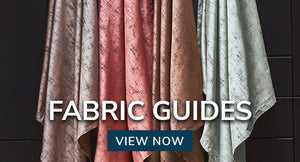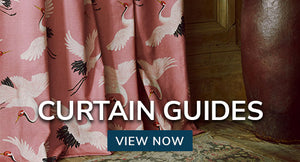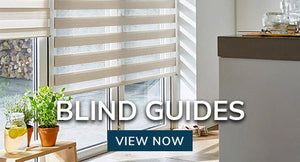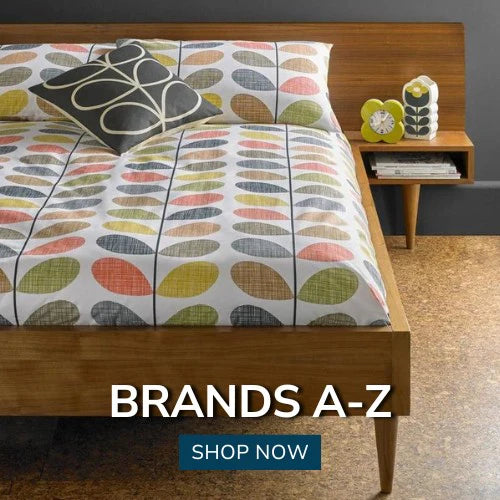Everything you need to know about curtain hold backs, tie backs and accessories
Finishing touches are very important when it comes to dressing your windows and never more so than with curtains. Extra touches and accessories can really finish off a window treatment and make all the difference between a stunning looking window and a decidedly average and lack lustre one! When you’ve taken hours agonising over which fabric to choose, what style of curtain heading to go for, what type of curtain pole and tracks to choose and how or who to fit them, you may want to think about those little extra touches and accessories that can really finish off a window treatment and make all the difference between a stunning looking window that creates a talking point and a decidedly average or just ok one!
- What’s the difference between hold-backs and tie-backs?
- Is it true that you can’t have tie-backs with eyelet curtains?
- What is a curtain boss and where or how do you use them?
- Styling curtain hold backs
- Styling curtain tie backs
What’s the difference between hold-backs and tie-backs?
To put it very simply, one holds the curtain back and the other ties the curtain back, so let us explain.
Tie-backs
Tie-backs are made from soft and flexible material, usually of the same fabric as the curtains, or of twisted, satin rope with an ornamental tassel at the front. However, there is no limitation to what they can be made of really so long as they are flexible and not rigid; and you can find wire and bead versions, crystal glass ones, ribbon ones and many other materials creatively used to make tie-backs including everything from shells to twigs, branches and even metal chains. If you’re not the arty and creative type though or you’re not one for bringing the outdoors indoors, then you only need to pop over home wares section to find a fabulous selection of ready-made, stylish and impressive tie-backs. Or if you’re ordering from our extensive collection of made to measure curtains then don’t forget you can add matching tie-backs to your order.

A tie-back needs to be flexible and soft enough to bend, as it is designed to wrap around and contain all the fabric in a single curtain. The curtain is pleated into soft folds or pleats once it is hung and a tie-back is then placed around all of the pleats to hold them in place and also to pull the leading (front) edge of the curtains back a little off the window area. This creates a softly curved drape effect which is very attractive and gives some style and shape to the window dressing. Tie backs normally have ‘D’ shaped rings sewn to either end. These ‘D’ rings are then hooked onto a tie-back hook which is screwed into the wall next to the outer edge of the curtain, at a height that looks pleasing to the eye, to secure them in place. If the curtains are full working curtains then the tie-backs are release from the hooks before the curtains are drawn together into the closed position and replaced again once the curtains are opened. We have a great selection of tie-back hooks available at Terry’s too so make sure you remember to include some with your order so you can finish your job off properly.

Hold-backs
Hold-backs are usually made of metal and far from being flexible or bendable, are rigid and stay in a fixed position. They are usually a rigid, cast metal, large loop or hook with a simple fixing plate at one end and a decorative finial at the other. We have stylish hold-backs available at Terry’s to match most of our metal curtain pole colours and finishes, with either very simple ball finials, or finials are available to match the finials from our metal curtain pole range for a fully coordinated look.
With hold-backs you don’t remove the hold-back from the curtain as you do with tie-backs when you wish to close them, but instead you remove the curtain from the fixed hold-back. And as where tie-backs are secured to a hook at the trailing (back) edge of the curtains, hold-backs are fixed at the leading (front) edge of the curtain, as close to the edge of the window recess as possible. This is because hold-backs are only intended to hold only the front edge of the curtain back slightly off the window are and not to retain the whole of the curtain. The look is simple but effective and adds just a little finesse to the look of the window treatment.
Is it true that you can’t have tie-backs with eyelet curtains?
If you’ve gone for an eyelet heading, a simple metal curtain pole and a modern fabric and you just want your curtains to hang in lovely slim columns of fabric at either side of your windows then granted, little or nothing else is probably needed to complete the look. The very nature of the clever way that eyelet heading is designed and the carefully calculated spacing of the eyelets across the top of the curtain mean that soft, wide pleats are formed in the curtains which fall naturally into well behaved columns of fabric which need little or no dressing.
The pleats stack well together too and create less of a stack-back width at either side of the window than a gathered heading would, so there is often little need to hold the front edge of the curtains off the window area.

If these neat columns are a little too structured and rigid for your liking though, but you still like the idea of an eyelet heading, then doing something as simple as tucking the first pleat on the leading (front) edge of your curtains neatly behind a metal hold-back or wooden curtain boss can be enough to soften the look slightly without adding fuss or frills. From our years of experience in making and hanging curtains at Terry’s Fabrics, we wouldn’t recommend using tie-backs with eyelet curtains or eyelet curtain poles because the pleats in the curtains are not only wide but deep too and retaining the entire curtain in a tie-back can crush and squash the pleats in a very unattractive way and leave a line of visible creases across the curtains when they are closed.
What is a curtain boss and where or how do you use them?
Curtain bosses, also sometimes known as ombres or mushrooms, are available in many designs, colours and sizes and in both ornate and very simple designs and in both metal or wood to coordinate with your choice of curtain pole. To look at they are best described as a large disc or button usually around about 8 to 15 cms in diameter, attached to a post or spindle which makes them look very much like a mushroom.
Bosses work very much in the same way as hold-backs because they are fitted at the leading (front) edge of the curtains, usually as near as possible to the edge of the window recess. Bosses, however are not designed to hold any volume of fabric at all and are purely intended to hold back the front edge of the curtain to create shape and effect and are usually more of a decorative feature than a functional one. Because of their decorative qualities though, they are also often used at the outer edge of curtains as a more attractive option than tie-back hooks and are especially effective for securing the large, thick, loops of rope tie-backs onto.
Styling curtain hold backs
One of the main purposes, along with practicality and function, of curtain hold backs is to look good. So, we’re going to look at some of the common questions we see when people are looking to purchase and style their curtain hold backs.
How should curtain hold backs look?
Curtain hold backs can be positioned however you like – as with all aspects of interior design it is subjective. However, a general rule of thumb with both tie backs and hold backs is to position the hold back a third of the way up from the bottom of the curtain.
Where to place curtain hold backs?
As above, generally you would place curtain hold backs a third of the way up from where your curtains end. Where to position curtain hold backs can be subjective, however. Once you have decided where to place your hold backs – they will need to be fixed to the wall.
Should curtain hold backs be angled?
There is no hard and fast rule on this, but generally many people position their curtain hold backs straight – if you prefer an angled look and find they still work practically then you can choose to do this.
Styling curtain tie backs
Similarly, styling your tie backs if these are what you choose is incredibly important not just to their appearance but to their functionality. Let’s take a look at some of the most common questions we get about tie backs.
There are plenty of different ways to tie back curtains and it will come down to preference how you choose to do so but we hope we can inspire your choices.
Where to put curtain tie backs
The rule of thumb here, as with hold backs, is to position curtain tie backs a third of the way up from where the curtain ends. So, you would take the full curtain drop length, divide by three and position one third of the way up from the bottom.
Types of curtain tie backs
There is really no limitation to the types of tie backs you can use. Generally, the types include: Decorative ruched tie backs, tassel tie backs and pendulum tie backs. In many instances you might find hold backs included in this, but as we have discussed above there are distinguishing differences between the two.
How to fit curtain tie backs
First you will need to measure where your tie backs are to be positioned, and mark this on the wall. How you then fit the tie backs will depend on the type that you are using – they should contain specific instructions on this.



























































